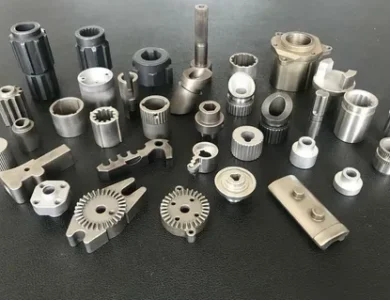How to Maximize Indoor Air Quality in Green Building Designs

Enhancing the quality of indoor air ought to be a top goal in all structures, especially those that are created with environmental responsibility in view. To achieve this, nevertheless, calls for going beyond what is required by the existing green construction criteria. It necessitates learning about and putting into practice best practices tailored to air quality like the BREEAM HEA 06 Assessment. By utilizing IoT sensors in conjunction with sophisticated analytics tools. Significant progress may be made in improving the quality of indoor air within green buildings.
Defining Objectives For Air Quality:
One of the biggest environmental pollution risks to human health, according to the Environmental Protection Agency (EPA), is indoor air pollution. Organisations dedicated to encouraging safer indoor settings have created guidelines and best practices for indoor air quality monitoring as worries about the quality of the air rise. For administrators of green buildings looking to create plans that will enhance air quality, these may prove extremely helpful tools. Modern technologies make it easiest to adopt many standards by controlling HVAC and purification systems, which let green buildings take in fresh air while filtering out hazardous germs and pollutants. It is also vital to monitor the outside air in locations where it is extremely polluted.
Comprehending Efficacy:
There has been a significant increase in awareness of the possible health impacts of poor indoor air quality with the advent of COVID-19. Several building owners have looked for technical solutions which promise to maintain clean, particle-free air to allay their fears. Regretfully, a few of these remedies don’t deliver the protection they promise and are bad investments.
Neither conventional nor green buildings can magically enhance the quality of the air within. However, some goods and services have no advantages at all. It’s especially true for businesses that support pseudo-science and use dishonest advertising to push inefficient methods of enhancing indoor air quality. Including the use of ionic air purifiers.
Ways To Raise The Quality Of Indoor Air:
The number of external air pollutants, interior sources of pollution, building characteristics, & inhabitant habits all have an impact on the overall quality of indoor air. Improving indoor air quality, the well-being of occupants, their performance, and production may be achieved by proper building design. Mechanical systems, and control measures, in addition to modifying occupant behaviour. Numerous tactics exist for enhancing indoor air quality, some of which are listed below:
Properly Designed:
Indoor air quality may be influenced by the building envelope, the direction and placement of air intakes, and the placement of mechanical ventilation systems. Hence, to regulate the main cause of pollutants for the entire building, these aspects must be taken into account throughout the design phase of projects.
Ventilation Using Mixed Modes:
Keeping good interior air quality may be facilitated by making use of mechanical and organic ventilation methods in structures, such as movable windows & automated window control systems.
Green Building Manage Of Air Quality During Building:
Moulds can grow when Green Building components are exposed to moisture throughout the construction period. Building materials are susceptible to dust and particle accumulation if they are not shielded. By shielding the Green Building supplies from moisture, dust. And other particles, the standard of the air throughout the building process may be preserved.
Avoid VOCs:
Additionally detrimental to indoor air quality are furniture and building materials. While it’s sometimes simple to solve, you should try to utilise sustainable and green products and stay away from well-known volatile organic compounds (VOCs) like formaldehyde. Naturally, it’s a lot easier if you have the option of low- or no-VOC paints, varnishes, and wood treatments right away to begin using greener products.
Green Building Limit The Sources Of Pollution:
Eliminating or lowering emissions from typical indoor pollution sources is the EPA’s first suggestion for enhancing indoor air quality. Basic duties like calibrating gas stoves, keeping cleaning supplies and disinfectants appropriately, or dividing office supplies like printers. Photocopiers into separate areas may all help with this.
Air Purifiers And UV Lights:

Mould and mildew may be eliminated with the help of ultraviolet lamps and air purifiers. Air purifiers are placed within ductwork to target bacteria which can grow there and stop them from polluting. The air inside the workplace, while lights are used to stop mould from growing in the first place.
Automate It!
If you’re prepared to step up your indoor air quality tactics, consider how you may further lower your energy costs. Lessen the negative ecological impact of your structures, and enhance occupant well-being by integrating information. About air quality into Green Building automation systems.
Final Words:
Protecting indoor air quality may be made simpler with the use of cognitive analytics and building management system software. In addition to helping you detect pollutants, the sensors and analytics software work together to alert you to inefficient ventilation systems and allow for real-time, automated modifications to maintain safety.
A sophisticated analytics platform’s insights may also be utilized to find further areas for development. Design clever automation plans which optimize air quality, and confirm updates and repairs. Thus, smart systems can be crucial to creating environments that are healthier and more ecologically conscious.






